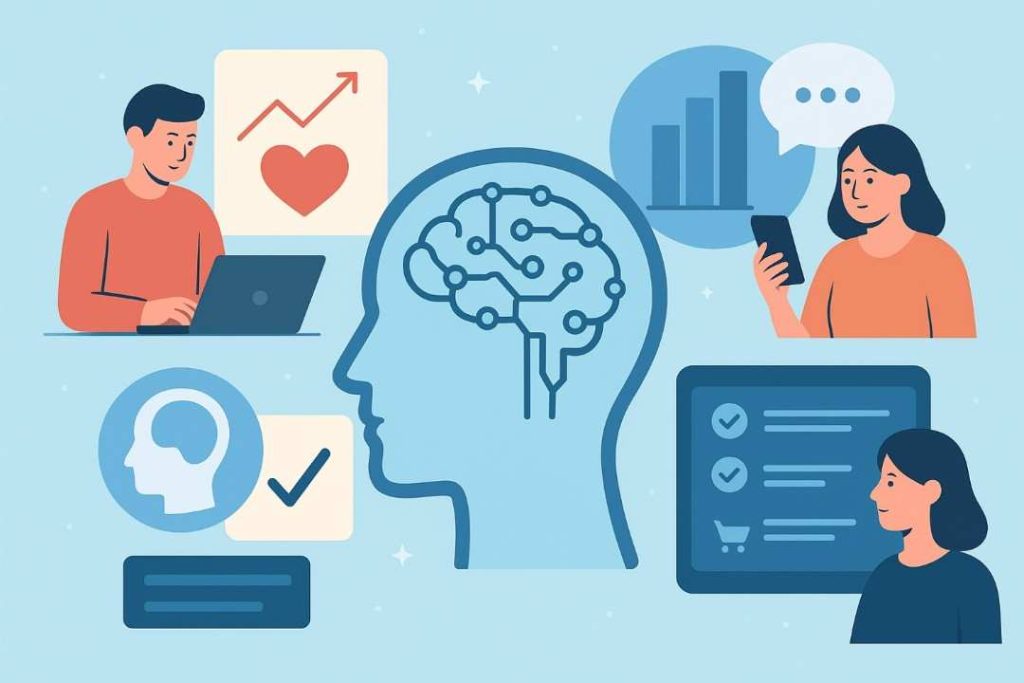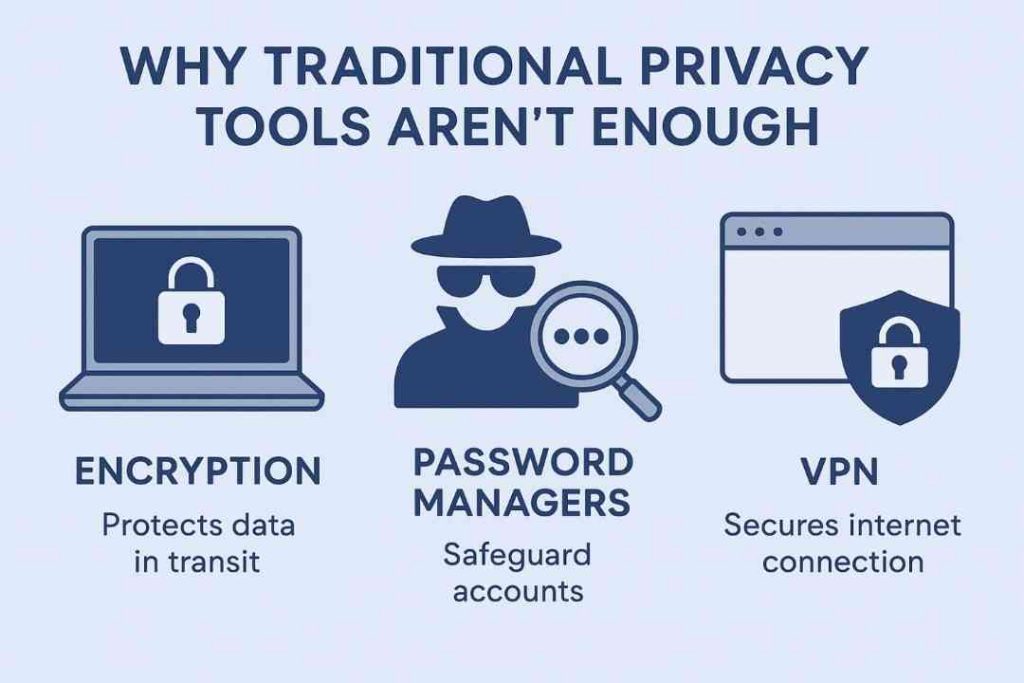Over the past decade, personalization has become the default experience of modern digital life. The content we see, the prices we pay, the ads we receive, the shows we’re recommended, and even the news stories we’re shown are now shaped by sophisticated profiling engines. Tech giants, retailers, data brokers, app developers, advertisers, and even AI assistants build unique models of who we are, what we value, when we’re vulnerable, and what might influence our next decision.
Over the past decade, personalization has become the default experience of modern digital life. The content we see, the prices we pay, the ads we receive, the shows we’re recommended, and even the news stories we’re shown are now shaped by sophisticated profiling engines. Tech giants, retailers, data brokers, app developers, advertisers, and even AI assistants build unique models of who we are, what we value, when we’re vulnerable, and what might influence our next decision. According to a recent report, many data brokers collect on the order of 1,000 data points per individual, ranging from personal identifiers and purchase history to health data, browsing behavior, and even demographic and psychographic traits, building sizable dossiers of people based on their online activity.
How do you protect your privacy when everything you do online is being tracked, recorded, or inferred?
This article explores how hyper-personalization works, why it’s accelerating, the risks it introduces, and how individuals can take back control of their digital identity without opting out of the modern internet.
Table of contents
- The Hidden Machinery Behind Personalization
- AI Has Supercharged Personalization
- The Privacy Risks No One Talks About
- Why Traditional Privacy Tools Aren’t Enough
- A VPN’s Role in Reclaiming Digital Autonomy
- How to Stay Private Without Opting Out of the Modern Internet
- Towards a More Transparent Digital Future
The Hidden Machinery Behind Personalization
Every personalized experience, whether it’s the perfect product recommendation or eerily accurate social-media ad, relies on an invisible ecosystem of data collection.
This includes:
- Browsing history: Pages you visit, links clicked, time spent per page.
- Device fingerprints: Hardware, software versions, fonts, screen size, and hundreds of invisible signals used for identification.
- Location data: GPS precision or IP-based approximations.
- Usage behavior: Sleep patterns, movement data, or app-interaction habits.
- Purchasing history: Items bought, items abandoned, and predicted intent.
- Cross-platform tracking: What you do on one platform is often shared or sold to others.
In the hands of personalization engines, these data points form a highly detailed “digital twin,” a behavioral model that follows your online activity across devices and networks. The more accurate the model, the more predictive and valuable it becomes
AI Has Supercharged Personalization

Traditional personalization once relied on simple, rule-based logic: if someone bought a laptop, you recommended a laptop bag. But today, AI has transformed personalization into something far more powerful and potentially far more intrusive. Large language models, predictive analytics, and machine-learning systems can now infer emotional states from subtle cues such as pauses, scrolling speed, and micro-behaviors. They can anticipate a person’s future interests before those interests are ever voiced, and they can build detailed personality profiles from writing style or engagement patterns alone. These systems can even predict major life events by analyzing purchasing behavior or movement data, and they can identify relationships between individuals without any explicit social ties. Hyper-personalization has evolved from reactive to fully anticipatory, requiring increasingly granular, deeply personal data that is remarkably difficult for users to avoid or opt out of.
The Privacy Risks No One Talks About
Hyper-personalization doesn’t just shape your experience; it shapes the information you encounter, the options you see, and ultimately the reality you perceive. Here are the most significant risks facing users today:
1. Loss of anonymity
The more signals collected, the easier it becomes for companies to identify users even if they use private browsing or regularly clear cookies. Device fingerprinting alone can uniquely identify millions of people.
2. Predictive profiling
AI systems can infer highly sensitive information such as political leanings, health concerns, financial stress, or shifts in personal relationships without users ever explicitly sharing it. These insights emerge from subtle patterns in behavior, language, purchases, or activity data. As a result, algorithms may know more about a person’s private life than the person realizes they’ve revealed.
3. Price manipulation
Dynamic pricing engines can adjust costs based on perceived income level, device type, or browsing behavior, creating unequal experiences for different users. When algorithms tailor prices too precisely, they blur the line between personalization and exploitation. Over-personalization can ultimately make everyday life more expensive for those who are algorithmically profiled to pay more
4. Security exposure
The more data collected about users, the more appealing these systems become to cybercriminals. Data breaches no longer expose only passwords or emails; they now reveal behavioral patterns and intimate digital traces. This shift dramatically increases both the stakes and the potential harm of any security failure.
5. Manipulation and behavioral nudging
Hyper-personalized content can be crafted not only to inform but also to influence user choices subtly. This raises significant ethical concerns about how persuasion is deployed and who controls it. As personalization becomes more precise, individual autonomy becomes increasingly vulnerable.
Why Traditional Privacy Tools Aren’t Enough

Most consumers rely on browser settings, cookie banners, or simple ad blockers to maintain privacy. Unfortunately, these tools only address a fraction of modern tracking techniques.
Today’s tracking is:
- Device-level
- Network-level
- Behavioral
- AI-driven
- Cross-platform
That’s why privacy experts now recommend a multilayered approach, and one of the foundational layers is protecting your network identity
A VPN’s Role in Reclaiming Digital Autonomy
In a world where your data fuels personalization engines, one of the simplest ways to reduce unnecessary tracking is to obscure your digital footprints at the network level.
A VPN such as X-VPN can help users regain some privacy by masking their real IP address, preventing advertisers and data brokers from tracking their location, and reducing the accuracy of behavioral profiles by adding noise to observable signals. It also helps stop third parties from linking activity across devices and encrypts internet traffic to block interception and ISP-level monitoring. While this doesn’t eliminate personalization, it allows users to exert more control over the data available for profiling.
For readers who want to strengthen their online defenses, a secure VPN download provides an immediate upgrade to privacy with minimal effort.
How to Stay Private Without Opting Out of the Modern Internet
You don’t need to reject personalization entirely to protect your digital identity. Instead, focus on shaping the version of yourself that systems can see.
1. Use a privacy-protective browser
Browsers like Brave, Firefox, and DuckDuckGo now block a wide variety of trackers by default, reducing the amount of data silently collected during everyday browsing. They prevent common tracking scripts, fingerprinting attempts, and third-party cookies from building detailed behavioral profiles across websites.
2. Deploy a VPN across all major devices
Using a VPN consistently on phones, laptops, tablets, and even smart TVs ensures that network-level data is protected no matter where you connect. This helps obscure your IP-based targeting signals, mask your physical location, and prevent ISPs or third parties from monitoring your activity. When used across all devices, it creates a unified layer of privacy that’s much harder for trackers to bypass.
3. Review app permissions regularly
Many apps request far more access than they legitimately need, especially in high-data categories like weather, fitness, navigation, and shopping. Regularly checking permissions can reveal apps collecting location data, microphone access, motion sensors, or contact lists unnecessarily. Reducing these permissions limits behind-the-scenes data harvesting that often fuels hyper-personalized advertising.
4. Avoid using the same email for everything
Relying on a single email address across platforms makes cross-service identity matching incredibly easy for advertisers and data brokers. Using alias email addresses or burner accounts for sign-ups, subscriptions, and purchases helps fragment your digital identity, making it harder to consolidate your behavior into a single unified profile.
5. Limit social-media data exposure
Social platforms are some of the most aggressive data collectors online. Using private accounts, restricting who can view your content, and disabling location services for posts can significantly reduce the personal information exposed. Minimizing “likes,” comments, and interaction history also reduces the behavioral signals used for profiling.
6. Delete old digital accounts
Inactive accounts are often overlooked but still contain personal data, making them ideal targets for both data brokers and cybercriminals. Closing unused accounts reduces your online footprint and eliminates reservoirs of outdated but still sensitive information.
7. Adjust ad-personalization settings
Major platforms like Google, Meta, Amazon, and TikTok offer partial controls to limit targeted advertising, interest categories, and inferred traits. These opt-outs aren’t perfect, but they meaningfully reduce the volume of data fed into personalization systems. Even small adjustments can weaken the accuracy of algorithmic profiling.
Towards a More Transparent Digital Future
Personalization isn’t inherently bad. When used responsibly, it enhances convenience, helps users discover relevant products, and improves digital experiences. The problem isn’t personalization, it’s opacity.
Users deserve clear disclosures about:
- What data is collected
- How it’s classified
- What inferences are made
- How long it been stored
- Who it’s shared with
- How it affects pricing or content exposure
As AI pushes personalization into new levels of precision, transparency, and user control will become non-negotiable expectations. Until then, individuals must take practical steps to protect their online privacy, starting with foundational tools like VPNs, secure browsers, and thoughtful digital habits.
Hyper-personalization isn’t going away. But with the right strategy, you can enjoy modern convenience without surrendering your autonomy.











